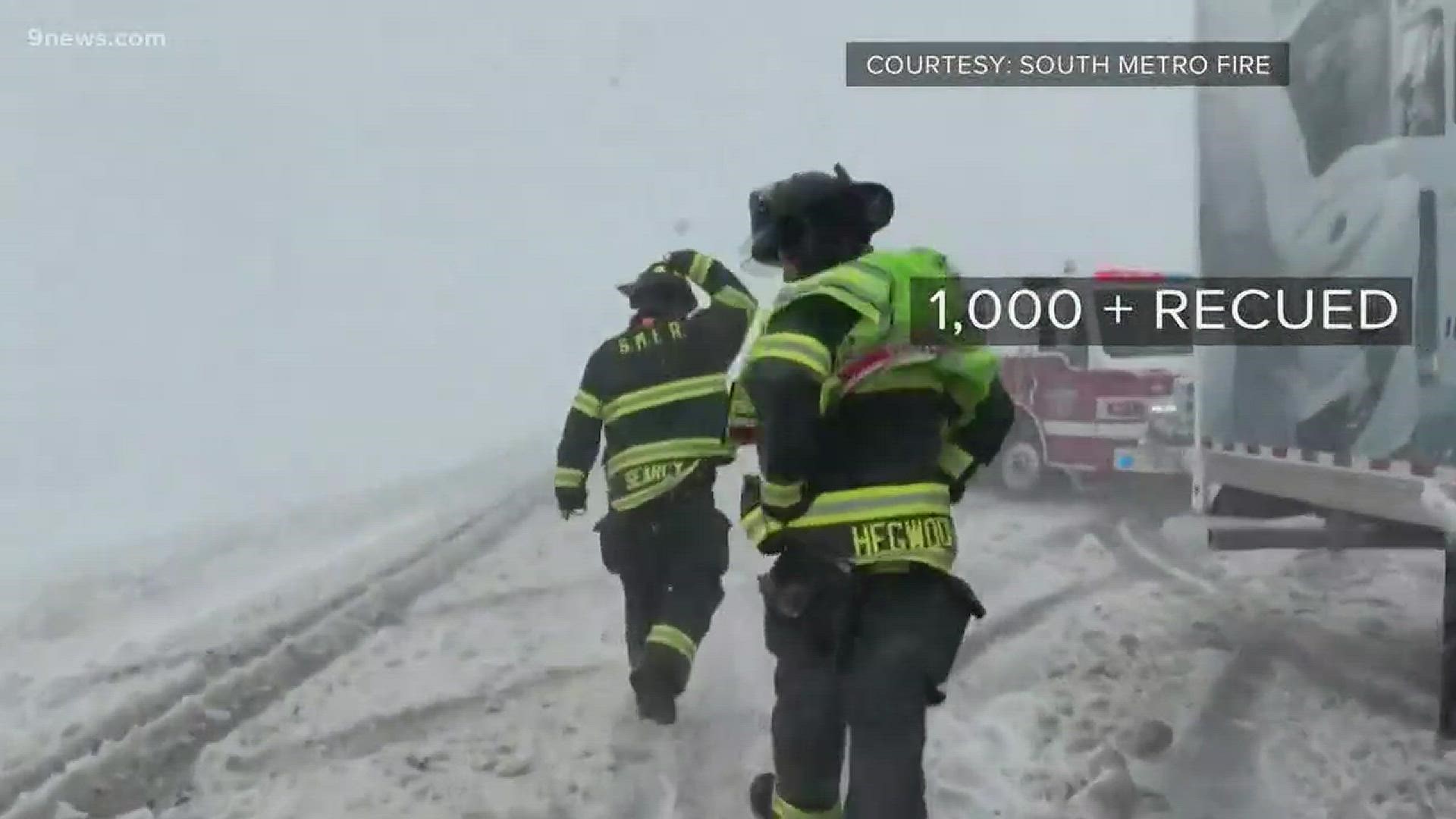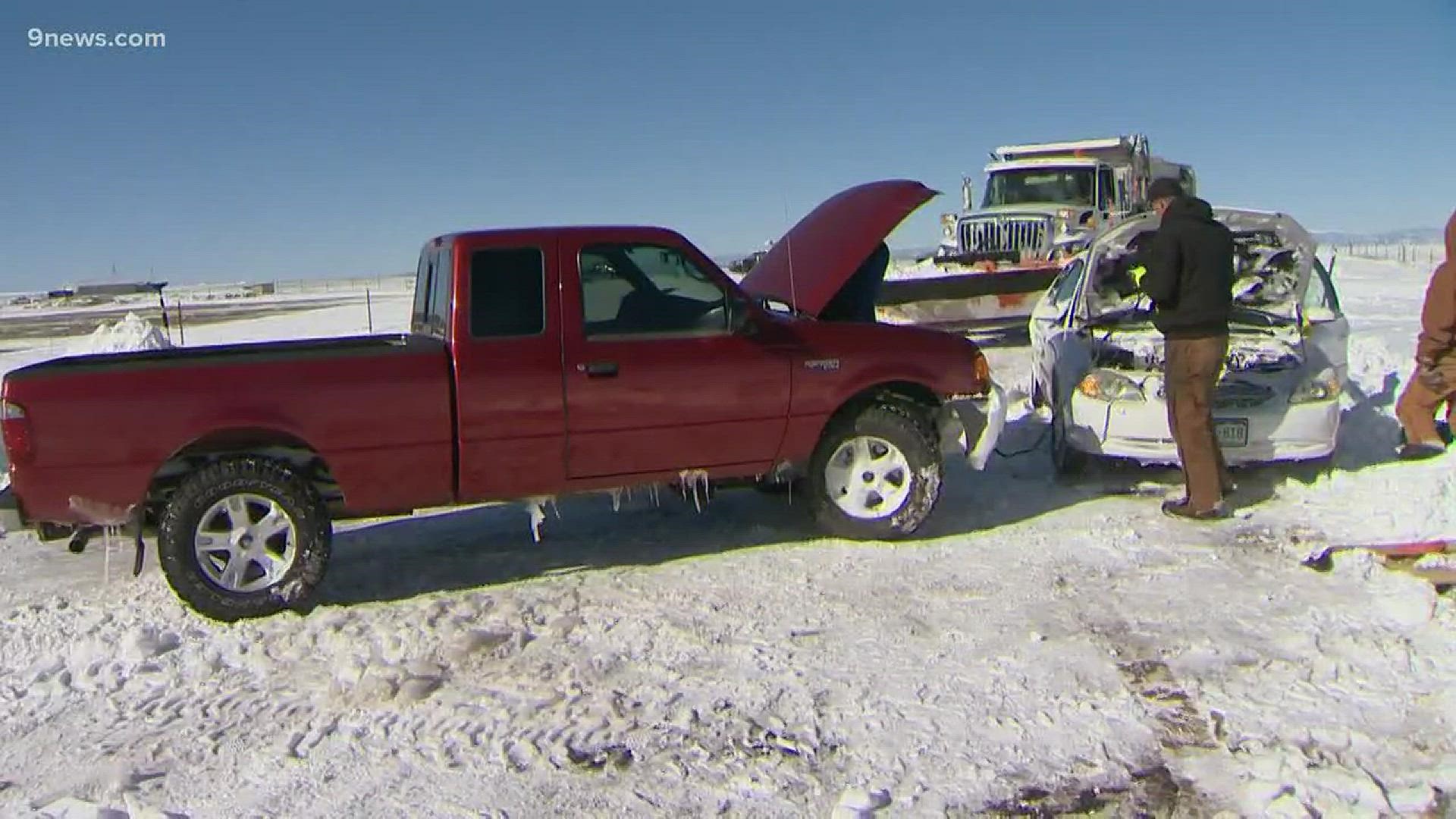COLORADO, USA — There's little doubt that this week's epic blizzard, known as a 'bomb cyclone', left its mark on Colorado.
It brought snow and extremely strong wind gusts, which impacted travel both on the roads and in the air. Those winds brought trees and damaged powers lines, leaving thousands of people in the dark.
Here's a look at some at its impact by the numbers:
FATALITIES
A member of the Colorado State Patrol was struck and killed by a vehicle on Interstate 76 on Wednesday morning.
Cpl. Daniel Groves, 52, was outside of his patrol car on the highway near Roggen helping a vehicle that had slid off the road when he was hit by another driver who lost control of his car, CSP said.
SHELTERS
According to the American Red Cross, 620 people spent the night in shelters Wednesday into Thursday morning. It had nine shelters open in Colorado. A majority of stranded people stayed at the Douglas County Fairgrounds. The agency said on its blog that 353 people stayed there. All the Red Cross shelters closed by 6:30 p.m. on Thursday.
The Colorado Emergency Operations Center (EOC) said on its website Thursday that it had 26 shelters open and 1,570 people stayed in them overnight.
RESCUES
Local first responders rescued more than 1,000 people, according to the state EOC. Many of them were rescued from I-25 in Douglas County.
In addition, the Colorado National Guard rescued 93 people and members of the Colorado Division of Fire and Prevention Control rescued 11 people.
According to a tweet from the Colorado Division of Fire and Prevention Control, a Wildland Fire Logistics team worked for 16 hours and traveled a combined 839 miles during rescue efforts in the Aurora and Arapahoe County area.
WATCH BELOW: Volunteers help pull out dozens of stranded vehicles after Colorado blizzard
POWER OUTAGES
During the peak of the storm on Wednesday, more than 400,000 Xcel Energy customers were without power. As of 7 a.m. Friday morning, just over 25,000 customers were still in the dark.
AIRPORT IMPACT
On Wednesday, more than 1,400 flights in and out of Denver International Airport were canceled. Around 12:30 p.m. that afternoon, the airport closed all six of its runways due to extremely low visibility on the airfield. It is only the fourth time in the airport's history that all runways were closed.
Four of the six runways reopened early Thursday, but the first flight didn't leave until just after 8 a.m. It wasn't until about 6 p.m. Thursday when the remaining two runways finally opened, according to a tweet from the airport.
RECORD BREAKING
The National Weather Service has yet to officially confirm that a Barometric pressure reading of 970.4 mb recorded in Lamar on March 13 is the lowest reading ever recorded in the state.
The previous record is 975.8, however, the NWS said it was working with the Colorado Climate Center, the Weather Prediction Center and the National Center for Environmental Information before calling it an official record.
In a tweet, the Weather Prediction Center shared an image that showed that pressure hit an all-time low for the month of March
Wednesday’s barometric pressure in Colorado, meanwhile, was similar to a category 2 hurricane.
A “bomb cyclone” is defined by a drop in barometric pressure that exceeds 24 millibars in 24 hours.
SUGGESTED VIDEOS | Local stories from 9NEWS



